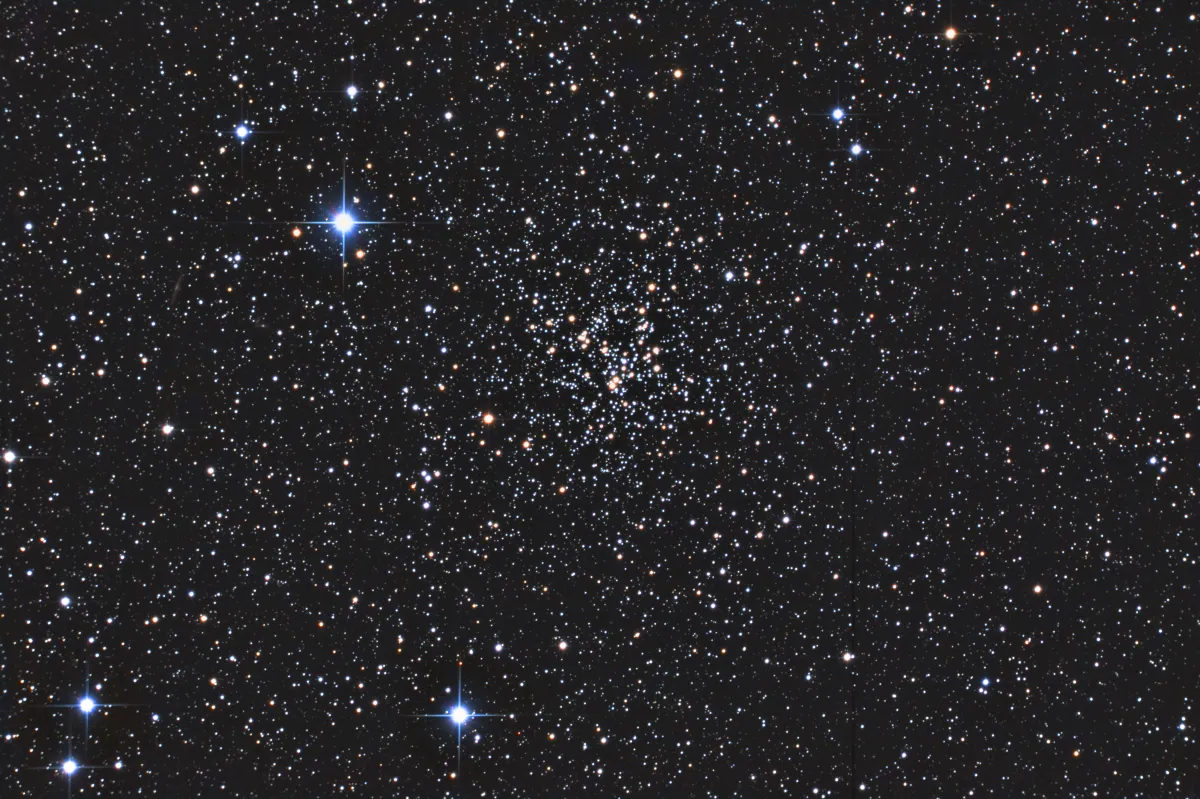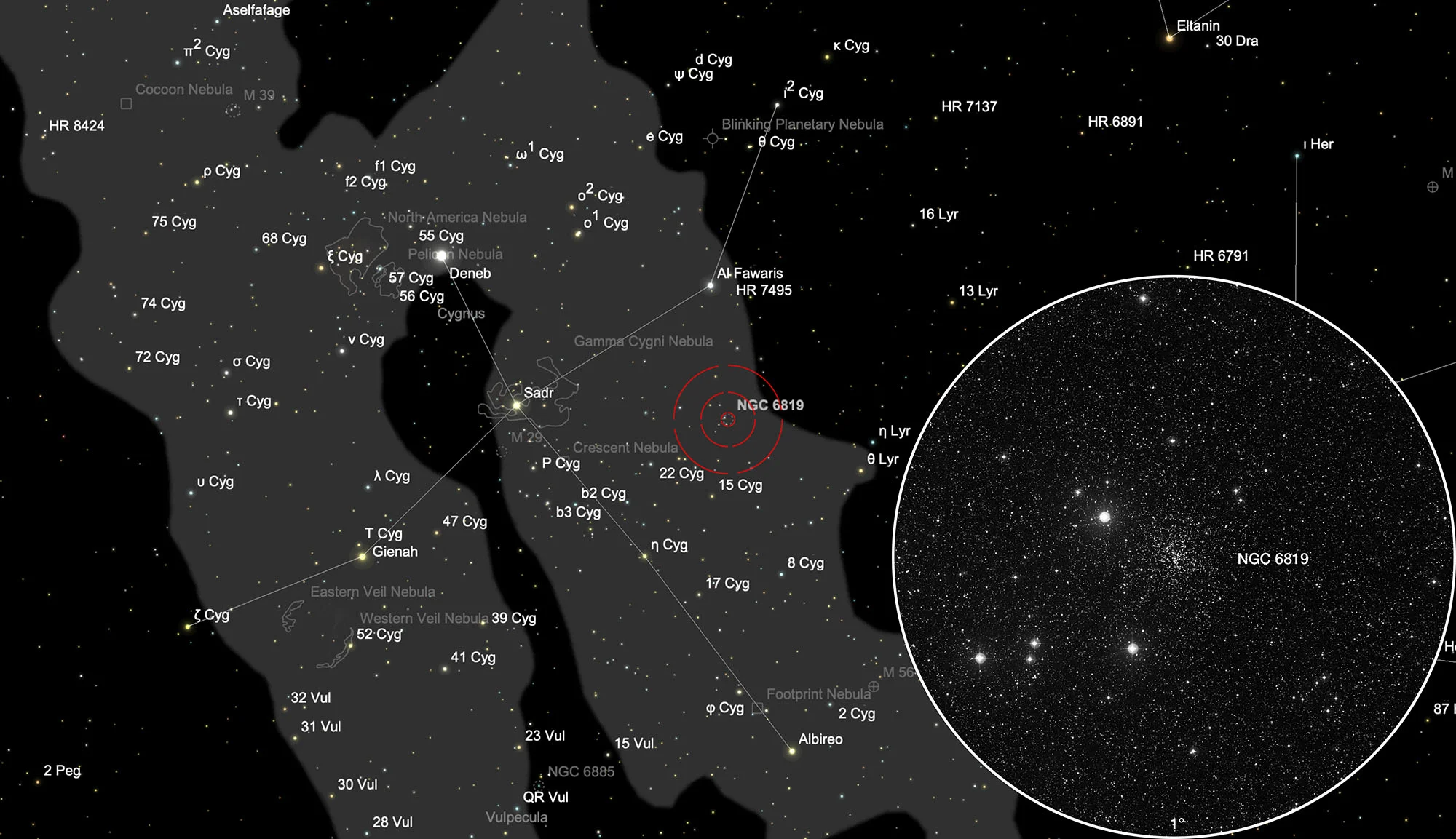Open Cluster NGC 6819
Object Description

History
NGC 6819 was discovered on 12 March 1784 by Caroline Herschel with her 4.2 inch reflector. However, her observations were not mentioned in the publications of her brother William. This is why John L. E. Dreyer knew nothing about it for his «New General Catalogue» in 1888. He indicated as discoverer Karl Ludwig Harding, who observed the star cluster in 1824. [277]
Physical Properties
NGC 6819 is a Trumpler-type I1r open star cluster with an apparent visual magnitude of about seven. The distance is estimated at about 2.4 kpc (about 7800 light years) and the age at 2.4 billion years. The metallicity is about that of the Sun and the mass of the cluster is about 2600 solar masses. [386]
| Designation | NGC 6819 |
| Type | OCL (I1r) |
| Right Ascension (J2000.0) | 19h 41m 18.0s |
| Declination (J2000.0) | +40° 11' 00" |
| Diameter | 5 arcmin |
| Visual magnitude | 7.3 mag |
| Metric Distance | 2.400 kpc |
| Dreyer Description | Cl, vL, vRi, st 11…15 |
| Identification, Remarks | h 2048; GC 4511; OCL 155 |
Finder Chart
Open star cluster NGC 6819 is located in the constellation of Cygnus. On 16 July it is in opposition to the Sun and crosses the meridian at local midnight. The best viewing time is March to December.
